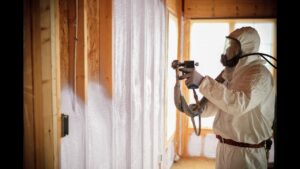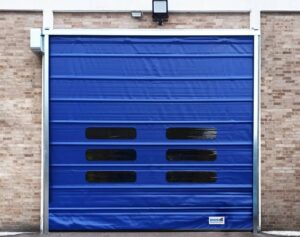Polypropylene fabric is a versatile and widely used material in various industries. Known for its durability, lightweight nature, and resistance to moisture, this synthetic fabric has become increasingly popular over the years. In this blog post, we will explore the properties of polypropylene fabric, its various uses, and the benefits it offers, making it a go-to choice for many applications.
What is Polypropylene Fabric?
Polypropylene fabric is made from a thermoplastic polymer known as polypropylene (PP). It is produced through a process called polymerization, where propylene gas is converted into a solid polymer. This fabric is characterized by its high tensile strength, low density, and resistance to chemicals and moisture. These properties make polypropylene fabric an excellent choice for a wide range of applications.
Properties of Polypropylene Fabric
- Lightweight: One of the standout features of polypropylene fabric is its lightweight nature. This property makes it easy to handle and transport, which is particularly advantageous in various industries.
- Durability: Polypropylene is known for its high tensile strength, which means it can withstand significant stress without tearing or breaking. This durability makes it ideal for use in products that require long-lasting performance.
- Moisture Resistance: Polypropylene fabric has low moisture absorption, which means it dries quickly and resists mold and mildew. This property is particularly beneficial in outdoor applications and environments prone to moisture.
- Chemical Resistance: The fabric is resistant to a wide range of chemicals, making it suitable for use in industrial settings where exposure to harsh substances is common.
- UV Resistance: Polypropylene fabric can be treated to enhance its resistance to ultraviolet (UV) rays. This property is crucial for outdoor applications, as it helps prevent fading and degradation over time.
- Recyclable: Polypropylene is a recyclable material, making it an environmentally friendly choice compared to some other synthetic fabrics. Many manufacturers are now focusing on sustainable production methods and recycling practices.
Common Uses of Polypropylene Fabric
Polypropylene fabric is used in a variety of applications across different industries. Here are some common uses:
- Packaging: Due to its strength and moisture resistance, polypropylene fabric is widely used in the packaging industry. It is commonly used to create bags for agricultural products, food packaging, and bulk packaging for various goods.
- Geotextiles: In construction and civil engineering, polypropylene fabric is used as geotextiles for soil stabilization, erosion control, and drainage. Its durability and resistance to environmental conditions make it an ideal choice for these applications.
- Automotive Industry: Polypropylene fabric is used in automotive interiors, such as seat covers and door panels. Its lightweight nature contributes to fuel efficiency, while its durability ensures a long lifespan.
- Medical Applications: Polypropylene fabric is used in various medical products, including surgical gowns, masks, and drapes. Its moisture resistance and chemical properties make it suitable for these critical applications.
- Home Textiles: This fabric is also used in home textiles, including upholstery, curtains, and carpets. Its durability and ease of maintenance make it a popular choice for household items.
- Sports and Outdoor Gear: Polypropylene fabric is used in various sports and outdoor gear, such as backpacks, tents, and sleeping bags. Its lightweight nature and moisture resistance are significant advantages in outdoor activities.
Benefits of Using Polypropylene Fabric
- Cost-Effective: Polypropylene fabric is relatively inexpensive compared to other materials, making it a cost-effective option for manufacturers and consumers alike.
- Versatile: Its versatility allows it to be used in various applications, from packaging to textiles. This adaptability makes it a valuable choice for many industries.
- Easy to Clean: Polypropylene fabric is easy to clean and maintain. It can be washed and dried quickly, making it ideal for products that require frequent cleaning.
- Hypoallergenic: Polypropylene fabric is hypoallergenic, making it suitable for individuals with allergies or sensitivities. It does not absorb moisture, which helps prevent the growth of mold and bacteria.
- Breathable: While polypropylene is moisture-resistant, it also allows air to circulate, making it comfortable to wear in clothing and other textiles.
- Strong and Durable: The high tensile strength of polypropylene fabric ensures that it can withstand heavy use without showing signs of wear and tear.
Environmental Considerations
While polypropylene fabric is a recyclable material, its production and disposal can have environmental impacts. It is important for manufacturers and consumers to consider sustainable practices when using polypropylene fabric. Recycling initiatives and the development of biodegradable alternatives are steps in the right direction toward minimizing the environmental footprint of this material.
Conclusion
Polypropylene fabric is a remarkable material that offers a wide range of properties and benefits, making it a popular choice across various industries. From its lightweight and durable nature to its moisture and chemical resistance, polypropylene fabric is well-suited for many applications, including packaging, automotive, medical, and home textiles. As industries continue to seek cost-effective and sustainable materials, polypropylene fabric will likely play a significant role in meeting those demands.
Understanding the advantages and versatility of polypropylene fabric can help consumers and businesses make informed decisions about its use in their products and applications. As we move toward a more sustainable future, it’s essential to consider the environmental impact of materials and explore ways to recycle and repurpose them effectively. By doing so, we can continue to benefit from the remarkable properties of polypropylene fabric while also being mindful of our planet.





